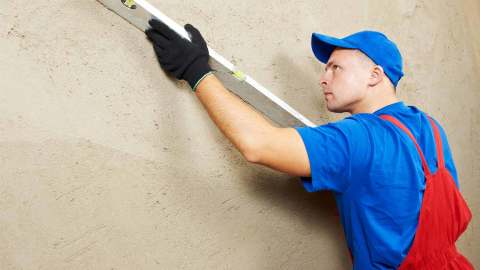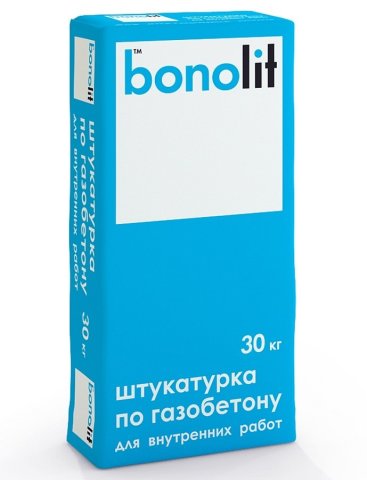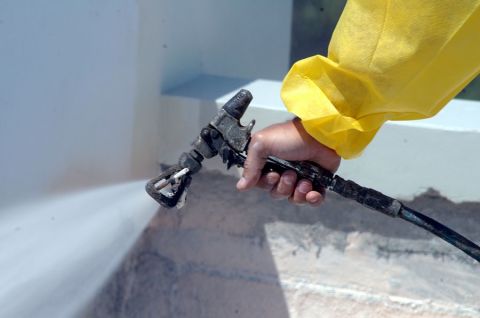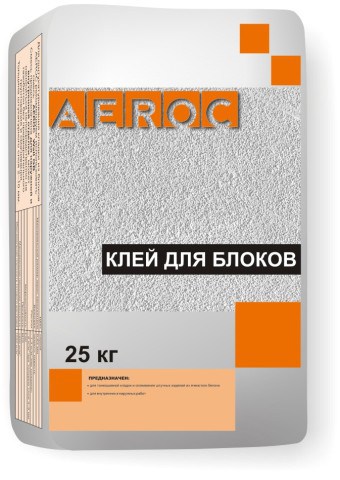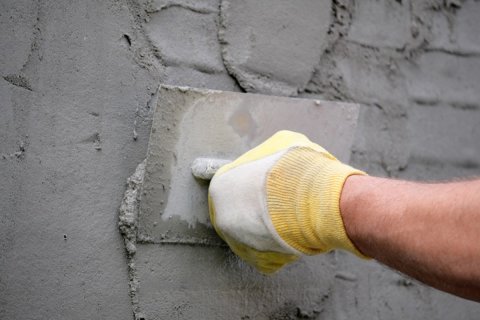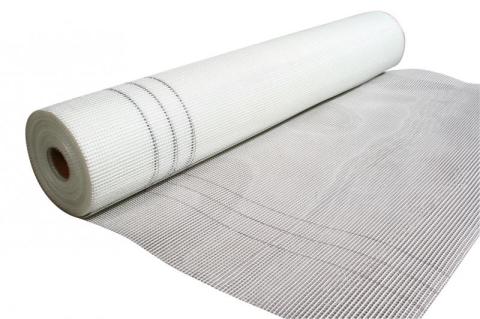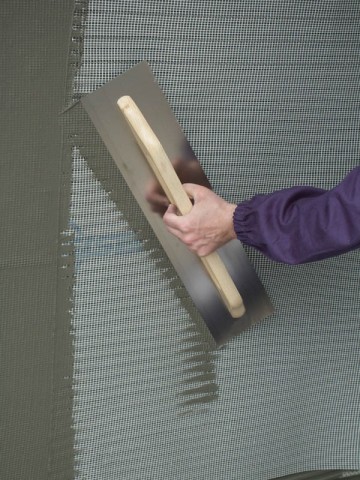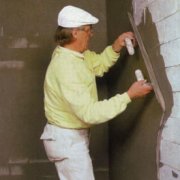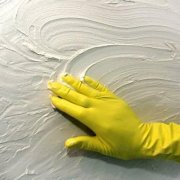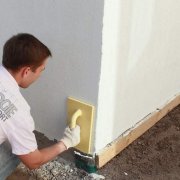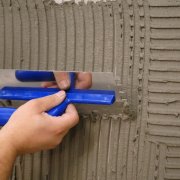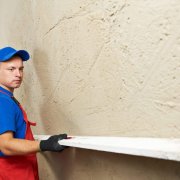Internal plastering of walls from aerated concrete: how to choose and apply mortar
Aerated concrete blocks today are incredibly in demand - and not only in private construction, but also in the construction of frame-block multi-storey buildings. The products are compact, lightweight, easy to install, which allows a person to build a warm and inexpensive housing with their own hands.
However, raising the walls and bringing them under the roof is not all. You need to know exactly how to plaster aerated concrete inside the house, and understand by what principle the internal plaster is generally selected. These issues became the topic of this article.
The content of the article
The principle of selection of plaster to the base
Both aerated concrete and gas silicate concrete are classified as cellular concrete. There is an opinion that this is one and the same, but there is still some difference between them.
In both materials, there is a combination of two cement-lime binders. However, their percentage is different, resulting in a material with completely different strength characteristics.
Leveling coatings for aerated concrete
In aerated concrete, up to 60% of cement is present, and the rest is lime and sand. In gas-silicate products, cement is only 14%, almost twice as much lime, and many times more sand. It is clear that if there is so little cement, then the strength of the products is not the same. In general, gas silicate concrete is no longer a structural material, but insulating.
- Perhaps now you have a question: "What does the internal wall plaster have to do with it?" And despite the fact that it is selected depending on the type of base, and in order not to have problems with the coating, you need to know exactly what and what can be combined. Crucial here are the characteristics of the binder.
Note! Cement, or rather products and solutions based on it, always has greater strength than lime and gypsum. When creating multi-layer screeds, the following principle must be observed: the base must always be more durable than the coating - otherwise, it will inevitably peel off.
- From the foregoing, it is not difficult to conclude: if there is no - or almost no cement in the blocks, then the internal plastering of the walls, and especially the external, cannot be made, for example, with cement-sand mortar (seeThe optimal ratio of cement and sand for plaster) It can be used for gas blocks, since they have a high percentage of cement, and the wall surface has sufficient strength.
- You can even use not special purchased mixtures, one of which we see in the photo, but knead the solution yourself. Only you need to keep in mind that the plaster should not be made as for heavy concrete or clay bricks - in the proportions of 1: 3, when you get a solution of grade M150.
Plastering the internal walls of aerated concrete is carried out with a solution of half the strength: M75. For its manufacture, cement M400 is taken, and mixed with sand 1: 5.
With an increase in the grade of cement, its amount in the solution should decrease to 1: 6, or even to 1: 6.7 - this is the arithmetic. Everything is done quite simply, and the lower price of self-mixing plaster will significantly save on finishing work.
How to plaster gas silicate
Now, as for the gas silicate wall, in which there is very little cement.Accordingly, such a plaster, as for aerated concrete, is not suitable for it. However, it is impossible to infinitely reduce the amount of binder in a solution - you can only replace part of it with another binder that is less weak in strength.
- In gas silicate blocks there is a large percentage of lime, and it is most logical if it is also present in the plaster. That is, the most ideal option for plastering such walls would be lime-cement plaster. Making it yourself is more difficult, as lime mortar should be present in the solution.
- It is much easier if the stucco of the house inside is produced with a purchased mixture. And by the way, if it is suitable for gas silicate, then it is suitable for aerated concrete (and not vice versa). Manufacturers often orient plaster mixes on both materials, which means that in addition to cement, lime is also present in them.
- Sometimes the instructions on the package say that the mixture can be used for all cellular concrete. This means that they can be applied to foam concrete walls, which include cement only cementitious substances. Just keep in mind that there are also cementless varieties of foam blocks made on the basis of lime.
- Like gas silicate, this material is also more likely a heater than a structural material. Foam blocks, in which there is absolutely no cement, are used for the construction of interior partitions. They can also be plastered, but only in the solution should not be cement.
It should be noted that silicate plasters are the best option for leveling walls of gas and gas silicate blocks, calcareous foam blocks, as well as silicate bricks. But since they contain liquid glass, and they are very corrosive, they are not used for residential premises - only in production shops and on building facades.
The appropriateness of using gypsum mixtures
The plaster inside the house having lime surfaces can be made of gypsum or lime-gypsum mixture. In principle, they are suitable for all types of substrates, but there is one thing here, and it concerns walls built of cellular concrete.
Given their high vapor permeability, and the similar property of gypsum, it is not always advisable to use plaster based on it, indoors:
- Here it is already necessary to consider the structure of the wall decoration as a whole, and oddly enough, you need to focus on the option of exterior decoration. Suppose, outside the cellular concrete walls will be monolithically lined with brick, clinker tiles, or stone, or plastered on polystyrene foam.
- Due to their poor vapor permeability, these materials will trap moisture in the thickness of the walls, giving it no way out. In this case, it is necessary to use only cement plaster inside, or provide such a decorative coating that will become an obstacle to steam.
- For example: if it is paint, then alkyd; if wallpaper, then vinyl or cork. Yes, the same tile or stone, any lining with insulation - all this will not allow porous walls to be saturated with moisture.
- In which case, the internal plastering of walls of aerated concrete, or other cellular material, can be performed with a gypsum mixture? There are only two options. The first is when the exterior walls are aligned on the base base with plasters with a high degree of vapor permeability: silicate, silicone, special for cellular concrete.
- The second option is a ventilated facade. When there is an unobstructed outlet for steam and condensate from the outside of the wall, the internal plastering of the walls, like their finishing, can be done as you like. But note that if the facade is insulated, then the insulation boards should be loose: soft mineral wool or the cheapest loose foam.
- We’ll also clarify this situation.Decorative plaster for interior decoration, most often made on the basis of gypsum. How to properly prepare a porous base in the case when the use of gypsum mixtures is undesirable. With cement-based blocks, no problem.
In any case, the base before decorative plastering should be aligned as if gluing wallpaper. Therefore, the walls should first be leveled with a cement composition, and when it dries, decorative gypsum plaster for interior decoration can also be applied. You will learn more about this in the next chapter.
Internal plastering of aerated concrete
So, in our story, we went directly to the implementation of internal plastering on aerated concrete walls. We will try to highlight the most important nuances of this process, and for clarity, we offer to watch the video in this article.
The nuances of preparation
Porous surfaces are characterized by the strongest moisture absorption, which must be reduced by priming. On aerated concrete walls, it is produced more abundantly than, for example, on brickwork. To do this, you need to take not just an adhesive primer, but the composition of deep penetration.
Important! Primers are prepared, but they are concentrated - that is, they are diluted with water in a proportion determined by the manufacturer, which must be observed. You should not think that if you apply undiluted soil, then it will be possible, for example, to reduce the number of passes. The composition should have a normal concentration.
The first layer is applied abundantly, preferably with a spray gun. You can also take for this purpose a conventional garden sprayer, with which trees are sprayed. After the aerated concrete wall dries slightly after processing, another layer is applied, after which the surface should already completely dry.
Double impregnation significantly reduces the absorption of the wall, but does not eliminate it at all. Yes, this is not necessary - otherwise how will the solution stick to the surface? The surface of the gas blocks is very smooth, and for plastering you need to provide good adhesion. It is impossible to make incisions, as on heavy concrete. How to get out of the situation?
How to make the plaster coating as strong as possible
After priming, task number two is to reinforce surfaces. This is necessary not only for the best adhesion of the layers, but also for the prevention of cracking.
This is especially important when the walls are erected from gas silicate, in which five times less cement than in gas blocks. The strength of such a foundation is rather weak, and the plaster, even gypsum, will be more durable, and will work on separation.
- Your task is to make a strong layer between the base and the plaster overlay, which will provide them with the best adhesion. Therefore, no matter what type of plaster you use, the starting layer must be done with a glue mixture, which is intended for the installation of cellular blocks.
- To create a reinforcing layer, ordinary tile adhesive is also suitable. Many masters, due to the lower cost than the masonry mixture, prefer to use it. Why is adhesive needed, and not just plaster?
Note! The fact is that the adhesive compositions are always modified with polymer additives, which not only adhere, but tightly adhere the surfaces. The glue layer is thin and durable, a fiberglass mesh is also embedded in it. It is not only an excellent basis for plaster, but also reliably fixes blocks, preventing microcracks from appearing and expanding.
- A similar approach to preparatory work is especially important when self-made solutions are used for plastering.In them, unlike the factory ones, specially designed for gas blocks, there are no improving modifying additives, as well as fibers that reinforce the plaster in bulk.
- No words, factory mixtures solve all problems, but because of the high cost, they are often used for facades. On the internal plaster, which is not exposed to such influences as on the street, you can save money - you just need to do it wisely. If you do not want to have problems in the near future, the adhesive layer needs to be done anyway.
- Installation of the grid, in principle, is not required, and is carried out by masters at the request of the owner of the house. But the customer must know that the creation of the reinforcing layer only improves the quality: both the plaster and the foundation - after all, no one knows what shrinkage processes will occur in the ground.
- It’s better to be safe, and spend a little on the net, than to bear the cost of a full repair in the future. We especially advise you not to neglect the grid when the walls are being prepared for painting - after all, any crack on them will be immediately visible. Cracks are invisible under dense wallpaper, or tiled lining, but the task is not to hide them, but to prevent them from appearing.
- There is nothing complicated in the installation of the grid, and in the video presented in our article, you will see it. Cloths overlap with freshly applied adhesive solution, and then pressed, combing with a notched trowel. The use of such a tool is very important, because thanks to it, scallops from the squeezed solution remain on the surface of the mesh.
- When they dry, you get a beautiful embossed surface on which you can apply any plaster. First, the mesh is pressed into the adhesive layer with random movements, trying to press it as tightly as possible to the base. If normal leveling plastering is to be carried out on the walls, in the end, you need to do horizontal combing.
- This is necessary only so that the plaster, which in the next step will be applied to this surface, does not slip from the wall. Well, for decorative plaster - if it will be used for interior wall decoration, the base should be smooth. In this case, the relief is not left, and the solution on the grid, extruded by a notched trowel, is smoothed.
When can you start directly to plastering? We must say right away that doing this right the next day is undesirable.
Even if the surface seems dry, the cement adhesive has not yet gained sufficient strength. It is not scary if the plaster is applied on it in gypsum. If it is a cement mortar, then the adhesive layer must be given at least five days - or rather a week, for a set of strength.
